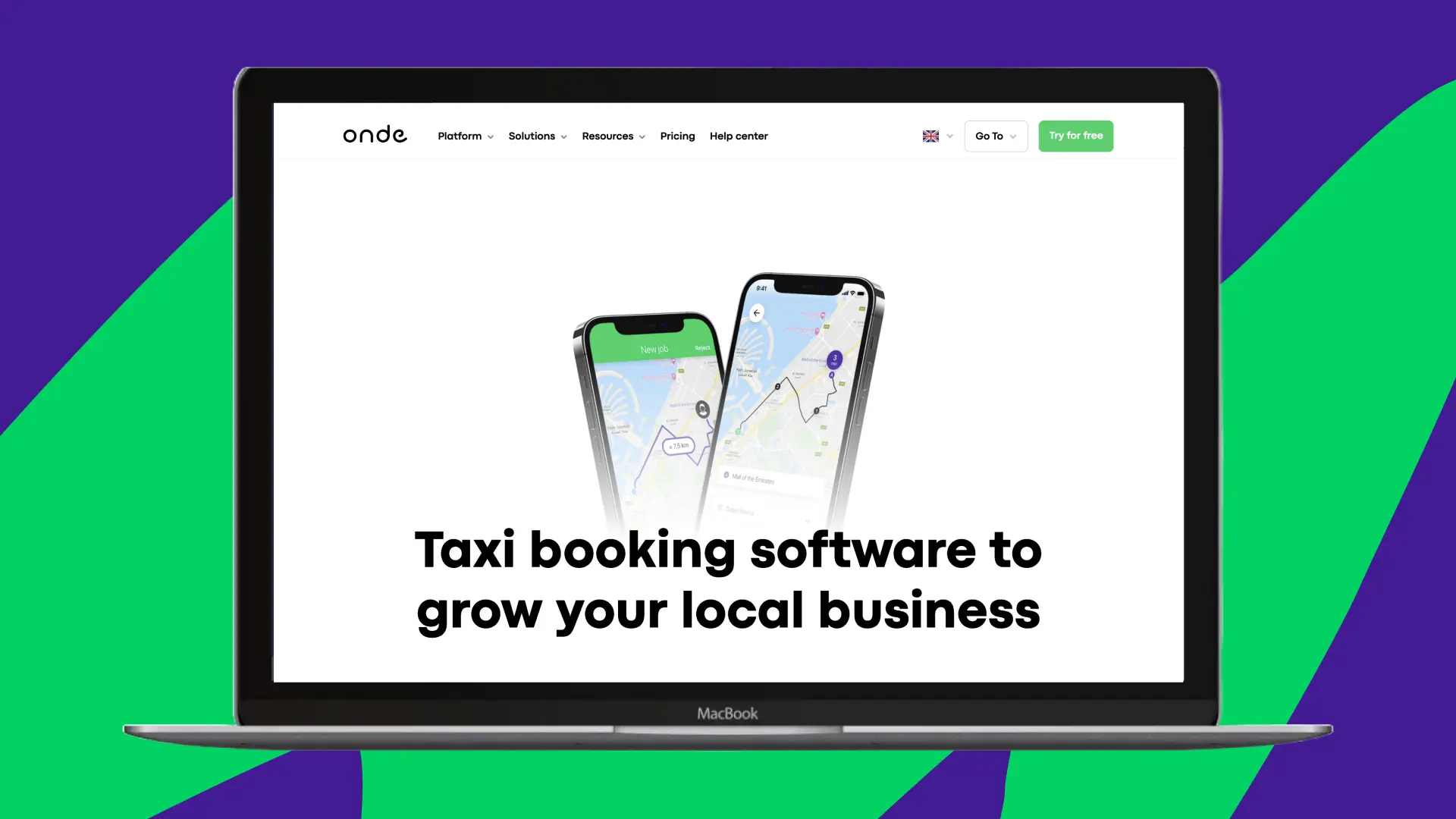7 Warning Signs You’re Not Ready to Launch a Ride-Hailing Business
In reality, it’s far more complex. Many startups launch too early without foundational pieces in place, which leads to customer frustration, driver churn, operational chaos, and ultimately, failure.
Here are 7 signs you're not ready to launch a ride-hailing business — and the real-world consequences that can follow if you ignore them.
1. You haven’t done your market research
A ride-hailing business lives or dies by how well it understands its market. Without comprehensive research, you're essentially flying blind.

You should know:
- Market size and growth potential: is there room to grow, or is the market already saturated?
- Who the major competitors are – and how they’re performing.
- Customer sentiment – app store reviews, forums, and social media are goldmines for understanding what users love and hate.
- Unmet needs and pain points: what are users complaining about? What are drivers demanding that no one is delivering?
Real-world example:
A company launched in Mexico City, drawn by the large population and urban density. But they underestimated the intense competition and financial pressure required to compete. Without a clear niche or deep research, the startup quickly ran into unsustainable losses. After belatedly conducting market and competitor research, they pivoted to smaller cities with less competition and lower customer acquisition costs. There, they scaled sustainably and now operate in multiple Latin American countries.
Lesson: Launching in large cities is risky - often it’s better to launch where competition is lower, and then scale. Consider not only market size, but also other factors when launching your brand.
2. You don’t know how to beat the competition
Competing in the ride-hailing space means more than copying what others are doing. You need a clear, defensible Unique Value Proposition (UVP) that addresses unmet needs in your specific market. And you must be able to deliver on it.

Before launching, you should answer the following question:
- What’s unique about your service?
- Why should someone choose you over an established app?
- What will keep your drivers and riders loyal?
Real-world examples:
- Zambia: A startup launched with a generic ride-hailing model. With no clear differentiation, they struggled to attract users. After some tough lessons, they pivoted to B2B transportation services, targeting companies that needed dependable employee transport. With this focused niche, they found a profitable and loyal customer base.
- United Kingdom: A company advertised short wait times as its selling point. But in practice, most drivers weren’t online, and 80% of ride requests went unfulfilled. The result? Poor reviews, frustrated users, and a collapse in credibility.
- MENA Region: A startup promised low fares in marketing but delivered inflated prices once users joined. This bait-and-switch tactic led to negative feedback across social media and ad comments, damaging the brand’s reputation.
Lesson: Your UVP must be both genuine and deliverable. Empty promises can do more harm than no marketing at all.
3. You don’t understand the local business environment
Every region presents unique challenges: regulations, localization needs, and payment preferences can vary drastically from city to city, even within the same country.

You should know:
- What permits, licenses, and insurance are required for ride-hailing?
- Are there local requirements for apps or transportation services?
- What are the most common and trusted payment gateways in the region?
- Do you need to offer services in multiple languages?
Real-world example:
In Côte d'Ivoire, a startup launched its service and kicked off a major marketing campaign. But a new regulation was passed shortly afterward requiring all taxi drivers to obtain an expensive license. The law had been under development for months—a fact the company could have learned with proper legal monitoring. The business was forced to pause operations and seek emergency investment to survive.
Lesson: Launching without understanding the legal and logistical environment is a gamble. Try to avoid it.
4. You don’t have a clear strategy or business plan
Too many startups dive into operations with only a vague idea of how they’ll grow. However, without a detailed plan, it’s challenging to scale and easy to exhaust your cash.
You should have:
- A clear go-to-market strategy: How will you acquire your first users and drivers?
- Calculated unit economics: How much does each ride cost you vs. how much it earns?
- A plan for customer and driver retention: What will keep both parties loyal?
- Defined team roles: One person can’t do everything. Success requires operational clarity.
- A diverse service portfolio: Offering just budget rides won’t be enough — consider executive rides, deliveries, or corporate transport.

Real-world examples:
- Indonesia: A startup focused solely on low-cost rides as its main growth tactic. It attracted riders but didn’t offer premium services to balance margins. Profitability was too low to sustain operations.
- United States: A company launched a driver recruitment campaign with a fixed-fee commission model. However, most drivers in the area preferred percentage-based commissions. The misalignment caused the campaign to flop.
Lesson: Strategy isn’t optional — it’s the foundation for sustainability and scale, and it should be thought through and based on the research you’ve done before.
5. You don’t know how taxi operations actually work
Running a ride-hailing business means operating a live, high-stakes logistics platform. Understanding how to manage real-time demand, supply, and performance is non-negotiable.
You need to know:
- How to onboard, train, and retain drivers
- How payments flow from riders to drivers (and your commission)
- How to monitor key metrics like order acceptance rates, cancellation rates, average driver availability, and utilization
- How to maintain service balance: too few drivers means long wait times; too many means driver churn
- How to handle customer support efficiently

Real-world example:
A company in the UK saw low numbers of completed orders and assumed there wasn’t enough rider demand. In reality, only 23% of ride requests were accepted by drivers because most were offline. The average driver's online time was just 25 minutes per day. They were misdiagnosing the problem and planning solutions for the wrong issue.
Lesson: If you don’t track operational data carefully, you won’t even know what’s broken, let alone how to fix it.
6. You don’t have a marketing plan
Many founders think, “We’ll launch, and people will find us.” They won’t. Marketing isn’t just helpful — it’s essential for user and driver acquisition, retention, and growth.
You need to define:
- Your marketing budget
- How your app will get discovered on app stores (App Store Optimization)
- Your online advertising strategy: social media, Google Ads, local platforms
- Your offline advertising: vehicle branding, billboards, radio, events
- Your launch promotions: rider coupons, referral programs, driver incentives

Real-world example:
Several Onde clients ran one-month marketing campaigns to get early traction. After gaining their first users, they stopped investing in marketing altogether. Without ongoing visibility, new rider signups dried up, driver earnings dropped, and the entire operation stalled.
Lesson: Marketing isn’t a one-time activity. It’s a core business function that must be consistently funded and optimized.
7. You don’t have a reliable tech solution
At its core, a ride-hailing company is a tech company. Your software must be reliable, scalable, and user-friendly for both riders and drivers.
Must-have features of your ride-hailing platform should include:
- 99.9% uptime, especially during peak hours
- Accurate geolocation and ETA algorithms
- Multiple payment options (cash, card, terminals)
- Secure driver profiles with full credentials
- In-app chat, SOS button, driver/rider ratings
- A dispatch and tracking panel for phone bookings or manual assignments
- Admin dashboard with real-time analytics and historical reports
- Frequent updates and security patches

Real-world example:
A startup in Mexico decided to build its app from scratch. They spent 10 months and a large chunk of their budget on development. When they launched, the app couldn’t consistently connect riders to drivers. Orders were lost, rides were delayed, and users were frustrated. Eventually, they turned to a ready-made tech platform—but not before damaging their reputation and wasting valuable time.
Lesson: Your tech isn’t just a tool — it’s the vehicle for your business. If it breaks down, your business grinds to a halt.
Final thoughts
A ride-hailing business is more than a flashy app and a few drivers on the road. It’s a complex system involving legal frameworks, hyperlocal market dynamics, real-time operations, and deep customer understanding.
Before you launch, take a long, honest look at your readiness. The ride-hailing space is crowded and competitive. But with the right foundation, a clear strategy, and a reliable platform, there’s still plenty of room for growth, especially in underserved or niche markets.
People Also Ask
What is required to start a ride‑hailing business?
Ensure proper licensing, driver registration, a dispatch app with real‑time tracking, secure payments, Customer and Driver apps, and a strategic marketing plan to meet local and regulatory demands.
How to build a ride‑hailing app like Uber or Bolt?
Design separate rider, driver, and admin systems with real‑time GPS, fare estimates, secure payments, and ratings. Develop in‑house or use white‑label software like Onde for a fast launch.
What is the best way to launch a ride‑hailing app?
Focus on core functions like booking, live tracking, payments, and ratings. Use a white‑label platform in a test market and refine the app before scaling if successful.
Why is it important to research market trends before starting an app?
Research uncovers consumer needs, competitive gaps, pricing strategies, and regulations, reducing risks while shaping a unique, compliant app offering for your target market.
What is the most important feature in ride‑hailing software?
App’s stability, real‑time GPS tracking, accurate ETAs, and accurate maps are key for efficient dispatch. This drives user satisfaction and streamlines fleet management operations.
